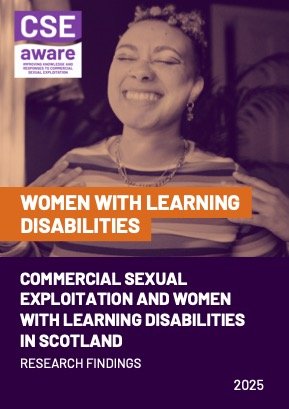By Mark Shaw, Tuesday Reitano, Simone Haysom, Peter Tinti
I llicit trade is an umbrella term that covers multiple crimes and commodities, including the theft, diversion, adulteration, counterfeiting, and production of substandard goods, all acts which can occur at multiple points along a supply chain. It is initiated, enabled, and protected by a wide range of actors, from unethical corporations and corrupt officials at all levels of government to armed violent groups in conflict zones and organized crime networks operating locally and transnationally. As global trade routes increasingly encompass developing economies—as a source, transit, and market for consumer goods—they present unique challenges to creating effective national and, by implication, regional and global regimes against illicit trade. For many states around the world, and especially in the Global South, these challenges threaten to destabilize social, economic, and political structures. These states are the world’s “states on the cusp.” The term illicit trade, for the purpose of this report, refers to illegal production, movement, or sale of normally legal goods. Such illegal movement is often carried out to derive profit by avoiding costs such as those imposed by taxes or customs duties. There is a particularly strong incentive for illicit trade in cases where goods are subject to high duties, or where goods are subsidized to be cheaper in one jurisdiction (food, sugar, and flour are examples) but not in another, providing incentives for illegal cross-border trade. The phrase “licit goods traded illicitly” captures this phenomenon neatly. Importantly, however, this definition also includes some goods that are counterfeited to pass off as being licit, and then traded either illicitly (avoiding scrutiny) or, on occasion, in legal markets. The trade in counterfeit goods alone has been estimated to be worth between 3 and 7 percent of global GDP. Many forms of illicit trade, including counterfeit medicines, substandard goods, and the falsification or adulteration of food and agricultural commodities, medical equipment, and consumer and industrial goods have serious public health and safety implications. Other forms of illicit trade have huge environmental, social, and economic impacts, not least of which is reduced revenue collection which weakens state institutions, creating a downward spiral of higher illicit trade intertwined with weaker state capacity. Reversing this trend, therefore, must be a global public good. This complex mix of products and commodities being traded illegally raises the important question of whether advances in technology can assist in more effective regulation. At the core of these efforts is ensuring that commodities are both produced and traded legally to protect consumers from harm. Here, “harm” refers to harms to the public (arising from poor quality or counterfeit products) and to the state (such products harms the state’s ability to collect essential revenues and to control markets in accordance with democratic processes). Global economic trends in international trade and ever more complex supply chains are, however, reducing the role that governments can play in monitoring and regulating trade, creating both greater vulnerabilities and increasing the importance of the private sector as a critical actor. This poses significant new challenges. With an estimated 80 percent of global trade travelling by sea, the trend toward the privatization of ports and other critical infrastructure and the proliferation of free trade zones have created a growing blind spot for governments seeking to understand and regulate supply chains and illicit trade. For some forms of illicit trade, the role of small air shipments through private carriers has had a similar effect, eroding law enforcement’s ability to monitor, predict, and interdict where and how illicitly traded goods will reach the hands of their consumers. Online marketplaces and small package shipping are replacing the physical spaces where illicit transactions used to take place; their market size and reach are expanding while at the same time reducing the stigma of illegality. In short, the scope for illegality is growing, just as the capacity for states to respond is weakening. Can advances in technology fill the gap? Sophisticated and rapidly evolving technologies are bringing new ways to track, trace, monitor, and maintain records with integrity. They are steadily reinforcing law enforcement’s capacity to identify criminality in the vastness of the surface and dark web. Despite the promise that technology has to offer, some longstanding stumbling blocks need to be overcome. Some of these are particularly acute in developing economies. At the most basic level, for example, no system can provide quality control over data entry when those responsible for entering the primary data are either willfully or through lack of capacity corrupting that content. More generally, the lack of global standards and effective and consistent legal frameworks, and, increasingly, questions about jurisdiction caused by cyber-enabled trade and global supply chains, may limit the impact of purely national regimes of oversight and enforcement regimes. Lack of capacity, insecurity, and multiple forms and levels of corruption are pertinent features of developing economies that compound the inherent challenges of responding to illicit trade. Evidence from case studies around the world, as well as two commissioned for this report—examining the political economy of illicit tobacco in Southern Africa and of counterfeit medicines in Central America—reveal that political actors and state institutions are complicit in enabling, promoting, and protecting illicit trade at the very highest levels of the state. They also show that it is often the most vulnerable and underserved in society who rely on illicit markets to meet basic needs. While there are clear distinctions by commodity and context, the perpetuation of illicit markets and trade within developing economies often can be exacerbated by systematic and serious failures in governance and political will, rather than technical shortcomings that can easily be overcome. Technical solutions also may have unintended consequences for governance and the poor. That does not mean that they should not be used, rather that a better understanding of the economic, political, and social context in which they are implemented is desirable. Implemented effectively, they hold great promise in taking forward steps to undercut illicit markets and improve citizens’ well-being. However, the changing landscape for infrastructure, investment, and development assistance also has reduced the leverage of more traditional multilateral institutions to insist upon the governance and policy reforms that would address these issues. These changes have had contradictory outcomes: increasing trade on the one hand but weakening regulatory systems and conditionalities (that had been a growing part of traditional multilateral development bank practices) on the other. Requirements for transparency, broad-based development benefits for the citizenry, or democratic governance have been weakened, although not removed, in the new financing landscape. Against this backdrop, private sector innovation for providing technology-based tools to enhance regulatory capacity combined with citizen empowerment is key. Such innovations, however, should be grounded in an understanding of the context into which they are introduced and be governed by effective oversight systems, including effective and transparent public-private partnerships. How to address illicit trade in developing economies, therefore, remains unsurprisingly complex. Wins often will be incremental and setbacks frequent. The overall goal simply may be to constrain the enabling environment for illicit trade rather than allowing it to endlessly expand, to target efforts where they have the greatest chance of sustained success, and to prioritize those commodities where the harmful implications are the greatest. This is a volatile time in global history, marked by rapid technological and political changes plus a global COVID-19 pandemic. We must develop a better understanding of the political economy of illicit trade and craft an active monitoring capacity for intervenening. In this report, we put forward a commodity- and context-specific political economy approach to achieve this and conclude with some guidance for policy makers from any sector, public or private, to assess when and how to respond to i o illicit trade, and to work in and with developing economies.
Washington, DC: Atlantic Council, Scowcroft Center for Strategy and Security , 2020. 57p.





















